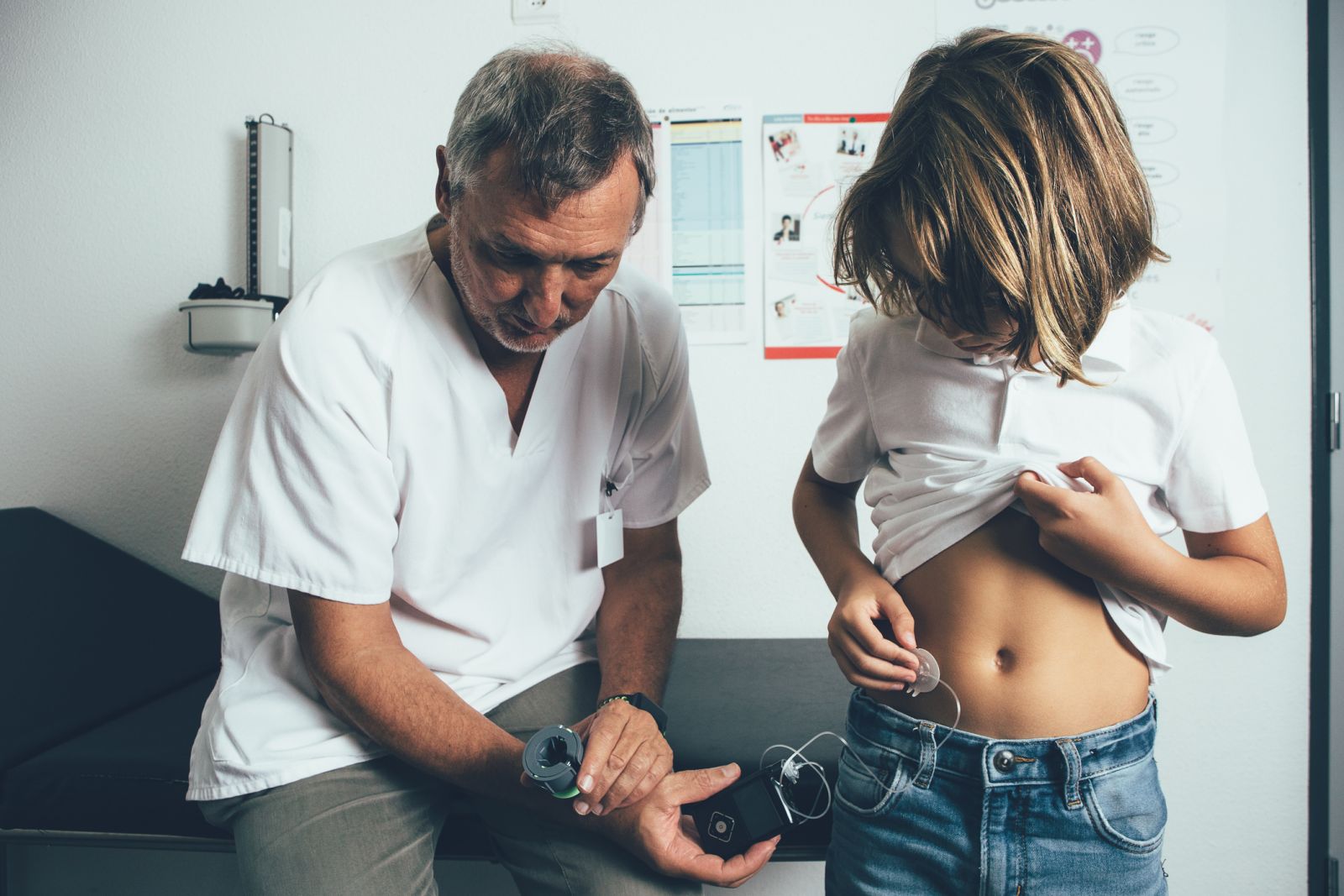Benefits of Automated Insulin Delivery for Children
By Anna Brooks
 For adults with type 1 diabetes, the adoption of automated insulin delivery systems can be life-changing. Emerging research shows the same benefits extend to children with diabetes.
For adults with type 1 diabetes, the adoption of automated insulin delivery systems can be life-changing. Emerging research shows the same benefits extend to children with diabetes.
Type 1 diabetes is challenging enough, but it’s especially difficult for young children living with the condition.
There are many reasons for this. Children with diabetes have different insulin needs than adults. They’re also a more vulnerable population as they often need help especially if they don’t yet have the needed diabetes self-management skills.
Because of the risk for diabetic ketoacidosis (DKA) and long-term complications, insulin therapy in children needs to start as soon as possible. But even with diabetes technologies like continuous glucose monitoring (CGM) and insulin pumps, more than half of children under six years old aren’t meeting their target glucose goals – an A1C of less than 7%.
Emerging research finds that automated insulin delivery (AID) systems could have significant benefits for this age group. Here’s why experts are pushing for AID systems as the standard therapy for infants and young children newly diagnosed with type 1 diabetes.
Why do we need AID systems for kids?
Estimates vary, but studies have indicated people diagnosed with type 1 diabetes before age 10 can lose up to 19 years of life.
“It always strikes me when I see this number,” said Dr. Revital Nimri, a senior pediatric endocrinologist from the Schneider Children's Medical Center of Israel.
“Technology can help improve outcomes,” she said. “Studies show that any device used is associated with better A1C levels across all age groups. AID provides the greatest time in range than any current technologies and insulin modalities.”
A 2022 meta-analysis backs this, showing AID systems to be more effective than insulin pumps and multiple daily injections in children and adolescents. Another recent study found that very young children with type 1 diabetes using hybrid closed loop systems had greatly improved glycemic control without an increase in low blood sugar episodes.
The 2022 ISPAD consensus further adds that preschoolers who have access to such diabetes technology can safely reach an A1C of less than 6.5%. The MiniMed 780G, for example, was shown to significantly improve time in range in children ages 2-6.
Furthermore, AID systems can help children achieve time in range (70-180 mg/dl) and time in tight range (70-140 mg/dL), a relatively new diabetes metric. A 2024 study found that children and adolescents with type 1 diabetes on AID therapy were more likely to achieve time in tight range of 50% or more (and time in range of 70% or more) compared to those using CGM alone.
“Time in tight range could lead to longer life expectancy and reduce the risk of complications,” said Dr. Ivana Rabbone, a pediatrics professor and diabetes researcher based in Italy. “Time in tight range is more challenging to achieve than time in range, but technologies like AID can help make it possible.”
Beyond A1C and time in range benefits, AID system use in young children also reduces future diabetes complications (like life-threatening DKA) and increases life expectancy. Such technology also negates the need for regular finger prick tests, which can be frightening and painful for children.
Benefits of AID systems for families
For parents or caregivers of a young child newly diagnosed with type 1, it can be extremely stressful. Not only are there feelings of guilt, sadness, and anxiety, but there are also persistent fears around their child having severe high or low blood sugar episodes.
Since infants and young children can’t do what adults with diabetes can – like count carbs, inject insulin, and operate technology – it can feel like a full-time job for parents and caregivers managing their child’s diabetes.
“Parents often experience management fatigue, exhaustion, and lack of sleep,” said Nimri. “In studies, these systems showed meaningful improvements during both the daytime and nighttime.”
AID systems allow children to spend more hours of the day in range (potentially meaning fewer hours spent on diabetes management), which can significantly improve well-being, mood, and quality of sleep for both parents and children.
Challenges of AID therapy for children
With these advances in technology of course come challenges. A major one is cost. Without health insurance, AID systems can cost up to $6,000 or more. That, and commercial AID products still aren’t available or accessible in many countries, especially low-income regions.
Diabetes education is also critical for the success of these devices. For families brand new to caring for a child with type 1, the learning curve of basic diabetes management – let alone these more advanced systems – is steep. To set families up for success, education and training on the use of diabetes-related technologies is crucial.
While things are moving in the right direction, a lot more work needs to be done to ensure fair and equitable access to AID systems to optimize health outcomes for kids with diabetes.
The bottom line
Diabetes is one of the most common chronic conditions among children and can be particularly tricky to manage. Recent research has established that AID technology is superior to other forms of insulin therapy for children and adolescents diagnosed with type 1 diabetes.
Though not widely used in infants and very young children yet, the benefits of AID for this age group include improved time in range, lower A1C, reduced risk of future complications, and longer life expectancy. Using AID therapy, parents and caregivers of type 1 children can enjoy more sleep, less anxiety, and a better quality of life.
“Early use of this technology in the management of type 1 diabetes has a longer impact on metabolic control,” Rabbone said. “This is the only way to change the story for type 1 children and adolescents.”
Learn more about diabetes management for children here:








